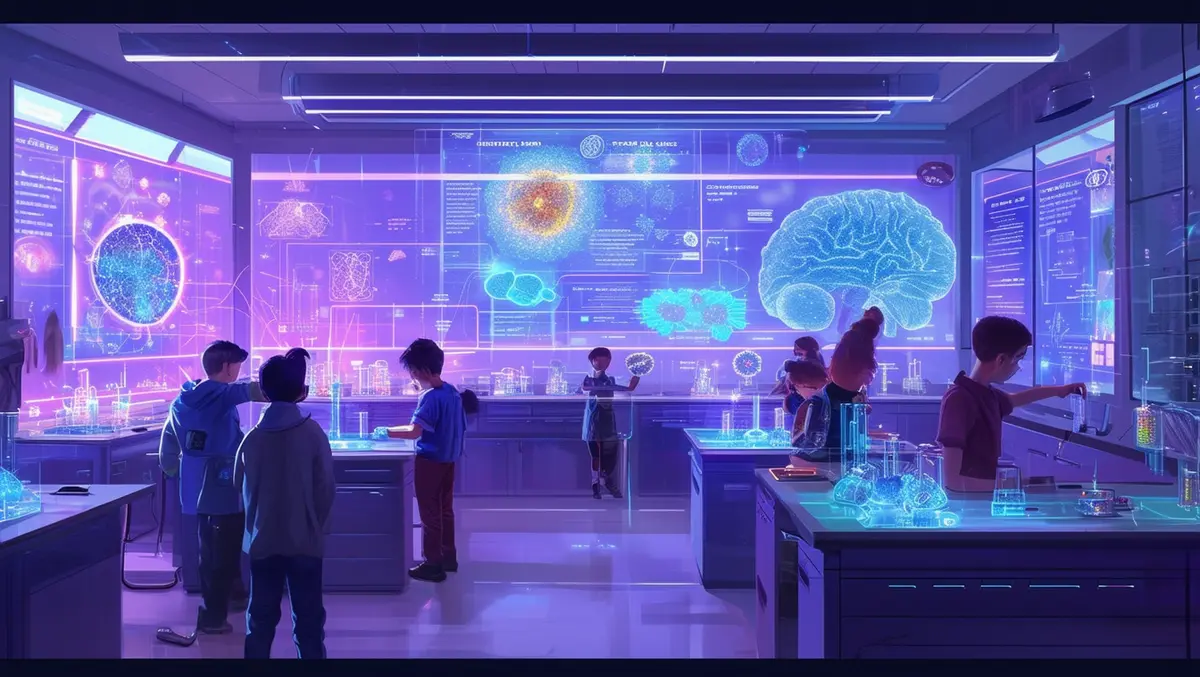
AI & practical strategies set to transform science education
In a recent webinar titled "Transforming Science Classrooms: Student Engagement in 2025," Kelly Hollis and Shane Smith offered insights into engaging science education strategies and the evolving role of technology, particularly artificial intelligence (AI), in the classroom setting.
Kelly Hollis began by emphasising the importance of using practical strategies and tools to make science learning interactive and inspiring for students. She noted, "We'll share practical strategies and tools teachers can take straight back into their classrooms, especially in the digital age."
Hollis continued by discussing the future landscape of education, highlighting trends and technologies expected to revolutionise student engagement. She elaborated on the concept of "effortless differentiation," supported by advanced assessment tools designed to streamline teaching processes. "Upcoming trends and technologies are going to revolutionise the way education happens and the way students engage with content," she said.
Shane Smith engaged with Hollis on her book, "The Engaging Science Classroom," noting how educational experiences can be significantly influenced by thematic learning, such as the Harry Potter-themed units Hollis created. Hollis described these initiatives: "We had the Chamber of Secrets as an introduction to science and spells and potions looking at particle theory. It was an opportunity for students to tie everything together in a magical context."
Delving into common challenges faced by science educators, Hollis pointed out the relevance of contextual units and technological tools. "A question teachers often hear is, 'How is this relevant?' Integrating contextual units with a pop culture theme can capture students' engagement," she said. Hollis highlighted interactive simulations like VR and AR as valuable in offering experiences beyond traditional classroom capabilities. "One of my favourites is the SkyView app. It's a simple and easy way to integrate AR technology into the classroom."
The role of technology in education, particularly EdTech, was another significant focus of the discussion. Hollis explained the benefits of curriculum alignment and online learning pathways in EdTech. "A platform like EP provides highly vetted and curriculum-aligned resources, reducing the time teachers spend finding supportive materials," she said. Education Perfect's Discover mode was highlighted for its ability to arrange content into progressive learning pathways.
AI's role in personalised learning was a recurring theme. Smith explained how AI tools can enhance the educational experience. "AI allows us to give each student feedback that is focused on their level of understanding," he said. The AI Powered Feedback Tool from Education Perfect is designed to provide personalised feedback and suggestions for improving student responses, rather than just offering model answers.
Addressing compliance, Smith assured that Education Perfect works closely with government agencies to meet regulatory requirements. "Our AI is enabled only within lessons and not in assessments, ensuring compliance with new policies," he stated.
Hollis and Smith also discussed how schools and teachers can effectively engage with new technological opportunities without feeling overwhelmed. Hollis emphasised the importance of collaboration among staff. "Find those champions in your school who are willing to try new things and share their experiences," she advised.
Smith identified the trial approach as an effective strategy for rolling out new AI tools, suggesting that schools get a few teachers to experiment with the platform before wider implementation. "As they learn where the value points are for their department, they can slowly expand its use," he said.
Looking ahead, both Hollis and Smith anticipated rapid advancements in educational technology. Smith mentioned that although there might be a lag before seeing the full impact, new AI tools to support students would accelerate. "We are going to see an acceleration of new AI tools to support students," he predicted.
On balancing traditional teaching with digital tools, Hollis encouraged the integration of technology to enhance classroom experiences. "Technology, like EP, assists with providing good quality resources, allowing teachers more time for hands-on activities and student interaction," she said.
Throughout the webinar, the significance of combining high-quality digital platforms with high-quality teaching was underscored. "It's the combination that provides that magical experience for students," Smith concluded.


